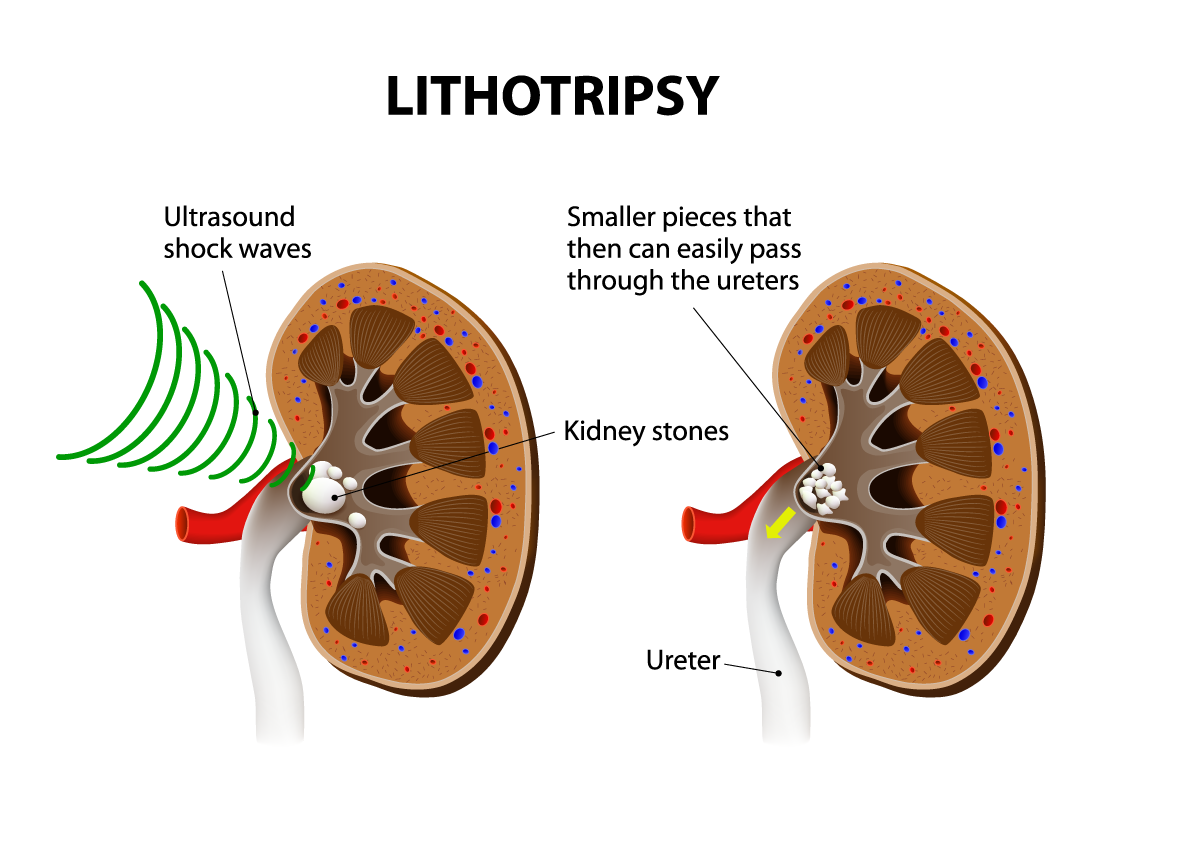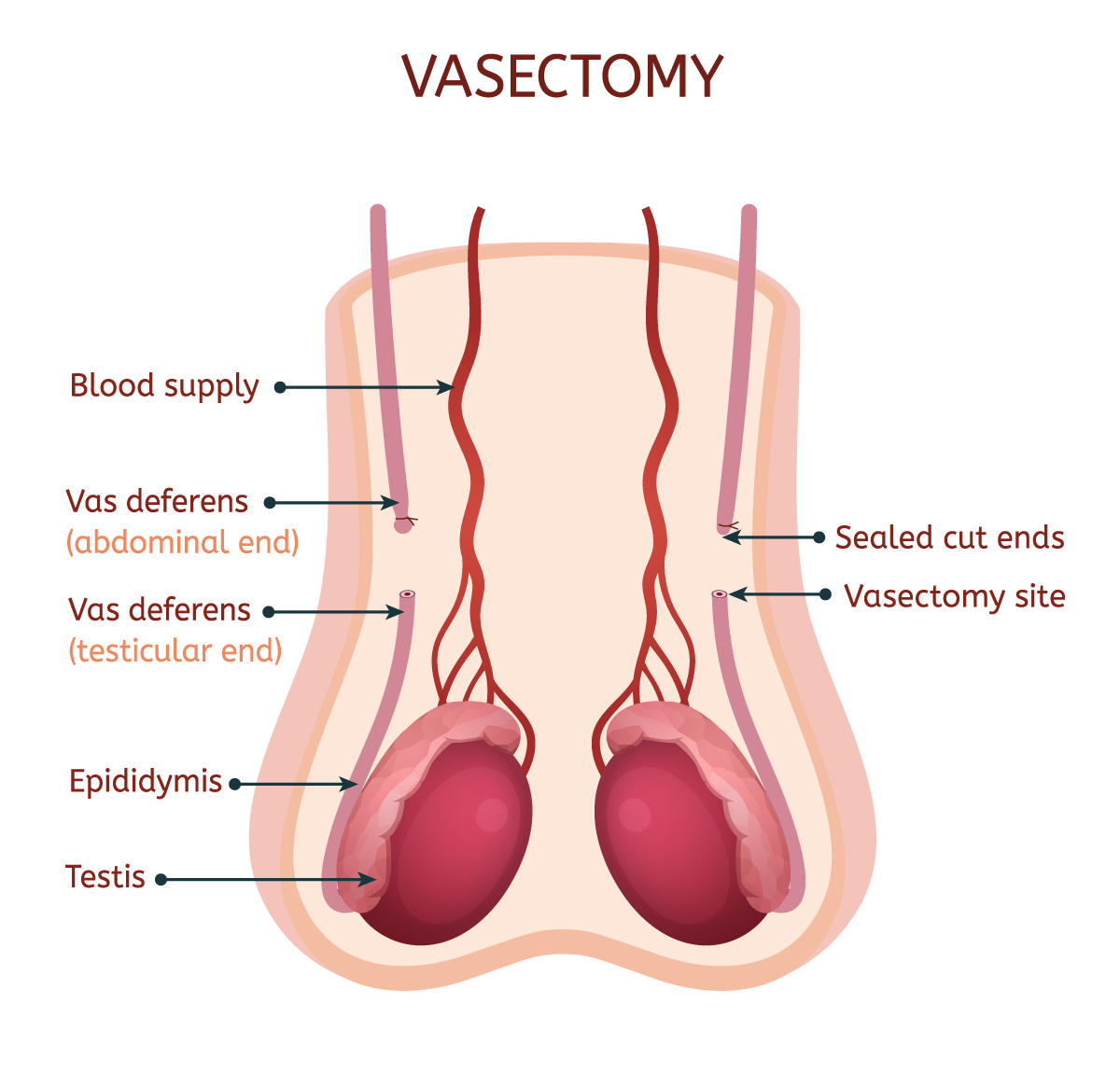
Extracorporeal Shock Wave Lithotripsy (ESWL)
This non-invasive procedure is designed to pulverize kidney and ureteral stones that are too large to pass through the urinary system. This is achieved by aiming shockwaves directly at the stone(s) and breaking them into smaller fragments allowing them to pass through the urinary tract spontaneously. The procedure is done under sedation and takes less than one hour to complete. Following the procedure patients will spend a short amount of time in recovery and then will be allowed to go home and resume their usual diet and activities. Patients will need to drink extra fluids to reduce the discomfort of passing the stone fragments. Some people may notice blood in their urine and bruising or an abrasion on the area of their back where the shockwaves were introduced. This is normal.
Vasectomy
The procedure is done for the purpose of elective sterilization. In a vasectomy a small cut is made in the scrotum and a segment is removed from each of the vas deferens (the tubes that carry sperm from the testicles to the urethra). Additionally, clips are placed on the end of each cut end. After a vasectomy sperm cannot move out of the testes. Therefore, after a 3 month waiting period following the procedure and a post-vas sperm count is clear, 99% of patients are rendered sterile. Depending on the physician and patient, the procedure can be done under sedation, with a light sedative, or with local anesthesia and usually takes less than 30 minutes. Following the procedure patients will spend a short amount of time in recovery and then will be allowed to go home. Typically, patients need to limit their daily activities and rest for one to two days following the surgery. Additionally, patients should avoid moderate to vigorous activity for five to seven days after the procedure.

Interstim
Interstim is an FDA-approved procedure, which has been shown to help women with urinary retention and overactive bladder. This two-phase procedure works by helping your brain communicate with the nerves that control your bladder.
Cystourethroscopy
This procedure is done to help determine reasons for blood in the urine, frequent urinary tract infections (UTIs), an overactive bladder, or pelvic pain. It also helps in diagnosing an enlarged prostate, bladder tumors, bladder stones, or certain urological cancers. In a cystoscopy, a small tube like camera is inserted into the urethra and advanced into the bladder. At the same time and with the same instrument, the bladder will be filled with sterile water allowing a more thorough view of the lining of the urethra, bladder and the openings of the ureteral orifices. Depending on the physician and patient, the procedure can be done with or without sedation and usually takes just a few minutes. Following the procedure patients will spend a short amount of time in recovery and then will be allowed to go home and resume their usual diet and activities. Patients will need to drink extra fluids to help reduce the chance of post procedure pain or infection. Additionally, some people may notice blood in their urine for up to a week. This is normal.
Ureteroscopy with Laser Lithotripsy (BPS)
This surgery is done to remove stones from the kidney or ureter. It is done by passing a small scope through the opening of the urethra, through the bladder and into the ureter and kidney where the stones are located. Once the stones are located, a laser is threaded through the scope and aimed at the stones breaking them into smaller pieces. The pieces of stone are removed using a small basket or, if small enough, washed out of the kidney and ureter. Often a small stent will be placed in the ureter temporarily to allow the kidney to drain and the ureter to dilate. The stent is usually removed within 1 to 2 weeks. The surgery is done under sedation and takes from 30 minutes to 2 hours to complete. Following the procedure patients will spend a short amount of time in recovery and then will be allowed to go home and resume their usual diet. Most individuals can begin regular activities when they feel up to it. It is normal to have blood in the urine and experience some discomfort from the stent. It is very important for patients to drink extra fluids. This will reduce the discomfort of passing the any extra stone pieces and dilute the blood in the urine.
Transurethral Resection of the Prostate (TURP)
This surgery is done to help alleviate symptoms associated with benign prostatic hyperplasia (BPH) and is for people who are not good candidates for the Urolift. In a TURP a narrow scope is inserted into the tip of the penis and into the urethra. The prostate surrounds the urethra and, therefore, the prostate can be easily accessed from it. With the scope in place, the surgeon carefully trims away excess prostate tissue. The surgery is done under sedation and takes from 45 to 90 minutes to complete. Following the procedure the patient will spend a short amount of time in recovery. The patient will have a Foley catheter during their time in recovery and for some days after the procedure. After leaving the surgical center patients may resume their normal diet but should increase the amount of fluid they drink. Typically, patients need to limit their daily activities and rest for one to three weeks following the surgery and until their urine has no visible blood in it.
Transurethral Resection of a Bladder Tumor (TURBT)
This surgery is done to remove bladder tumors. In a TURBT a narrow scope is inserted into the urethra and advanced into the bladder. The tumors are carefully removed using a specialized cutting instrument. The surgery is done under sedation and takes from 45 to 90 minutes hours to complete. Following the procedure the patient will spend a short amount of time in recovery. The patient may have a Foley catheter during their time in recovery and for some days after the procedure. After leaving the surgical center patients may resume their normal diet but should increase the amount of fluid they drink. Typically, patients need to limit their daily activities until their physician determines it is safe to return to their normal routines and until their urine has no visible blood in it.
